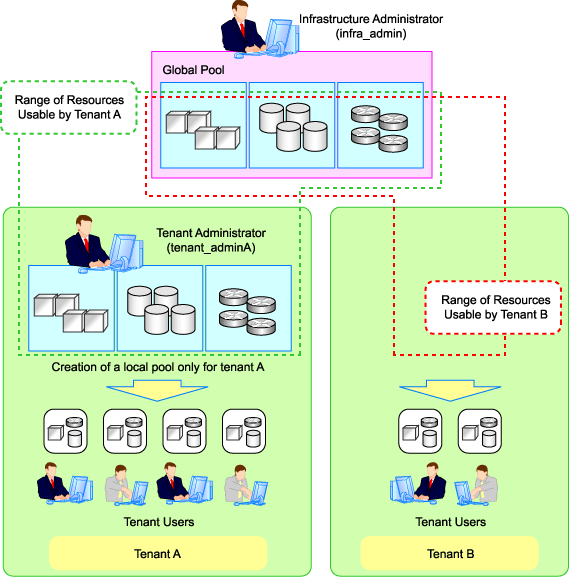This section explains how to operate tenants.
The following five patterns of tenant operation are available.
Pattern | Divide Resources in Tenant | Use Global Pools/Local Pools |
|---|---|---|
A | Do not divide in tenant | Use global pools only |
B | Divide in tenant | Use global pools only |
C | - | Use local pools only |
D | - | Use both global pools and local pools Use local pools as a priority |
E | - | Use both global pools and local pools Give priority to global pools |
(Pattern A) Do not Divide in Tenant
Global pools enable effective use of resources.
Figure 3.3 Pattern A
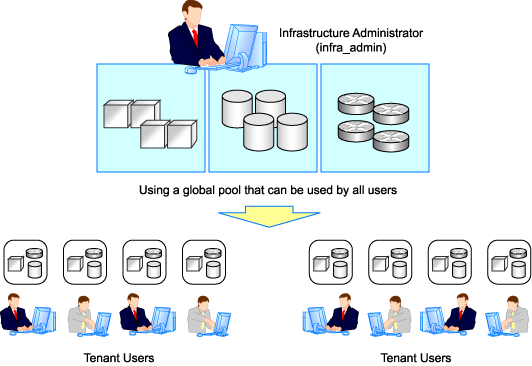
(Pattern B) Divide for Each Tenant (Global Pools Only)
Resources are placed in global pools, and L-Platforms are divided into tenants.
This enables public cloud-conscious tenant operation.
Figure 3.4 Pattern B
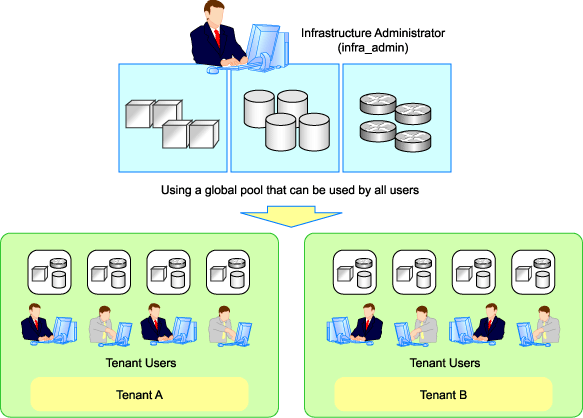
(Pattern C) Divide for Each Tenant (Create a Local Pool for Each Tenant)
Create a local pool for each tenant. This pattern is a similar operation to allocating resources to each tenant.
Figure 3.5 Pattern C
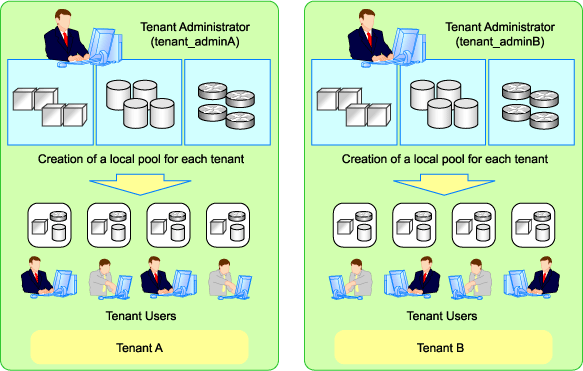
(Pattern D) Divide for Each Tenant (Both Global and Local Pools, with Local Pools Given Priority)
Figure 3.6 Pattern D
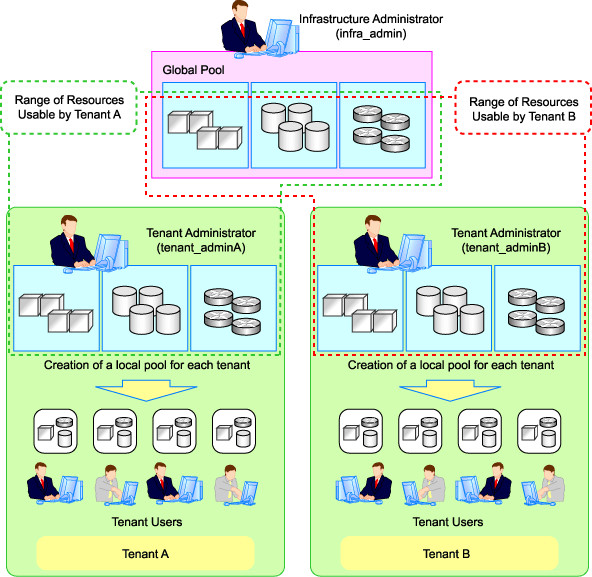
Only spare resources are placed in global pools. These spare resources are used when there is an increased workload.
(Pattern E) Divide for Each Tenant (Both Global and Local Pools, with Global Pools Given Priority)
This enables public cloud-conscious operation; however, tenants with a high service level can create a local pool and use resources exclusively.
Figure 3.7 Pattern E
